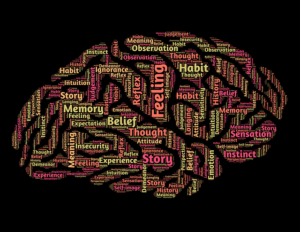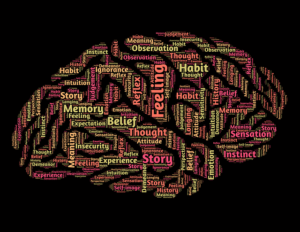Mindfulness is the practice of being present in the moment, without judgment or distraction. It involves paying attention to your thoughts, feelings sensations, and accepting them as they are, without trying to change or suppress them. Mindfulness has been shown to reduce stress and anxiety by increasing self-awareness and promoting relaxation.
One way to develop mindfulness is through meditation. This involves sitting quietly and focusing your attention on your breath, or on a specific object or phrase. When your mind wanders, gently bring it back to your breath or object, without judgment. Over time, this practice can help you become more aware of your thoughts and emotions, and less reactive to them.

 Another way to practice mindfulness is through everyday activities, such as eating, walking, or washing dishes. Pay attention to the sensations and movements involved in these activities, without getting lost in your thoughts or distractions.
Another way to practice mindfulness is through everyday activities, such as eating, walking, or washing dishes. Pay attention to the sensations and movements involved in these activities, without getting lost in your thoughts or distractions.
Breathing Exercises
Breathing exercises are a simple yet effective way to reduce stress and anxiety in the moment. One technique is to take a deep breath in through your nose, hold it for a few seconds then exhale slowly through your mouth. Repeat this several times, focusing on the sensation of the breath moving in and out of your body.
Another technique is to count your breaths, inhaling for a count of four, holding for a count of four, and exhaling for a count of six. This can help slow down your breathing and calm your nervous system.
You can also try alternate nostril breathing, where you close one nostril with your finger and inhale through the other, then switch nostrils and exhale through the opposite side. This can help balance the flow of air and energy in your body.
Progressive Muscle Relaxation
Progressive muscle relaxation is a technique tensing and then relaxing different muscle groups in your body, to release tension and promote relaxation. Start by tensing your toes and feet for a few seconds, then relaxing them and feeling the release of tension. Move up your body, tensing and relaxing your calves, thighs, abdomen, chest, arms,.
You can also combine this technique with deep breathing, by inhaling as you tense your muscles, and exhaling as you release them. This can help you become more aware of the physical sensations in your body, and release any stored tension or stress.
Progressive muscle relaxation can be done sitting or lying down, and can be practiced anytime you feel tense or anxious.
Body Scan Meditation
Body scan meditation is another mindfulness technique that involves bringing awareness to different parts of your body, without judgment or distraction. Start by lying down or sitting comfortably, and close your eyes. Bring your attention to your toes, and notice any sensations or tension there. Then, move up your body, focusing on your feet, ankles, calves, knees, thighs, hips, abdomen, chest, shoulders, arms, hands, neck, and head.
If you notice any tension or discomfort in a particular area, breathe into that area and imagine it releasing and relaxing. This can help you become more aware of the physical sensations and promote a sense of calm and relaxation.
Body scan meditation can be done anytime, and can be especially helpful before bed to promote better sleep.
Visualization
Visualization is a technique that involves creating a mental image or scenario that promotes calm and relaxation. This can involve imagining yourself in a peaceful place, such as a beach or forest, or picturing a positive outcome to a stressful situation.
Close your eyes and imagine yourself in this scenario, using all your senses to create a vivid and realistic image. Breathe deeply and allow yourself to fully immerse in the experience, feeling the calm and relaxation that comes with it.
Visualization can be done anytime, and can be especially helpful before a stressful during a break in your day.
Yoga and Tai Chi
Yoga and Tai Chi are physical practices that combine movement, breath, and mindfulness to promote relaxation and reduce stress and anxiety. These practices can help you become more aware body and breath, and promote a sense of calm and balance.
Yoga involves a series of postures or poses, combined with breath and meditation. Tai Chi involves slow, flowing movements that promote balance and relaxation.
Both practices can be done at home or in a, and can be modified for different levels of experience and ability.
Gratitude Journaling
Gratitude journaling is a technique that involves writing down things you are thankful for, to promote a positive mindset and reduce stress and anxiety. Start by writing down three are grateful for each day as a good meal, a kind gesture, or a beautiful sunset.
This can help shift your focus from negative thoughts or worries, to positive aspects of your life. Over time, this practice can help you become more aware of the good things in your life, and promote a sense of gratitude and contentment.
Gratitude journaling can be done anytime, and can be especially helpful before bed to promote better sleep.
Mindful Eating
Mindful eating is a technique that involves paying attention to your food and eating habits, to promote a healthier relationship with food and reduce stress and anxiety. Start by eating slowly and savoring each bite, without distractions TV or phone.
Notice the flavors, textures, and sensations of the food, and pay attention to your hunger and fullness levels. This can help you become more aware of your body’s needs and signals, and promote a sense of satisfaction and balance.
Mindful eating can be practiced anytime, and can be especially helpful during meals or snacks.
Mindful Communication
Mindful communication is a technique that involves being present and attentive in your interactions with others, to promote positive relationships and reduce stress and anxiety. This can involve listening actively, without judgment or distraction, and expressing yourself clearly and respectfully.
Before communicating, take a moment to breathe and center yourself, and focus on the person or situation at hand. Use” statements to express your feelings and needs, and reflect back what you hear from the other person to ensure understanding.
Mindful communication can be practiced anytime, and can be especially helpful during difficult or sensitive conversations.
Creating a Mindful Lifestyle
Mindfulness is not just a technique or practice, but a way of life. To reduce stress and anxiety, be helpful to incorporate mindfulness into your daily routine and habits.
This can involve setting aside time each day for meditation or mindfulness exercises, practicing self-care and relaxation techniques, and being aware of your thoughts, feelings, and physical sensations throughout the day.
Creating lifestyle can also involve simplifying your environment and routines, reducing distractions and clutter, and focusing on what is truly important to you.
Mindfulness techniques can be powerful tools for reducing stress and anxiety, and promoting overall well-being. By becoming more aware of your thoughts, feelings, and physical sensations, and accepting them as they are, you can cultivate a sense of calm and balance in your life.
From breathing exercises and meditation to mindful communication and lifestyle habits, there are many ways to incorporate mindfulness into your daily routine and reduce stress and anxiety in the moment and over time.





